Graduating in a pandemic, Jessan Macatangay finds beauty and power
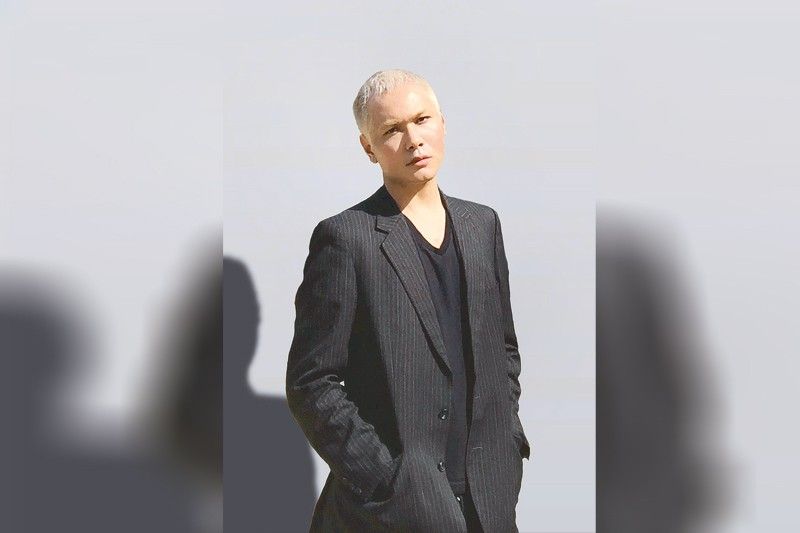
Every year, eyes are on the Central Saint Martins graduation show as a must-watch for the future of fashion. The prestigious London fashion school’s graduates include Alexander McQueen, John Galliano, Stella McCartney, and our very own Lesley Mobo.
In response to the global pandemic, the number of looks required of this year’s 106 graduates has been decreased to a submission of two, plus a 90-second video. It’s disappointing for students who are culminating years of hard work with this slimmed-down showcase.
But one collection stands out. It was by Jessan Macatangay, a young designer from Batangas who made the challenging circumstances work. He not only fashioned the unlikely combination of traditionally draped and pleated jersey with sculptural chair parts, but also came up with a full collection of five looks. Presenting a collection about “finding beauty and power in struggle,” the result is an emotional reflection into his inner world — a pre-COVID idea that took him years to develop — but also resonates with the world right now.
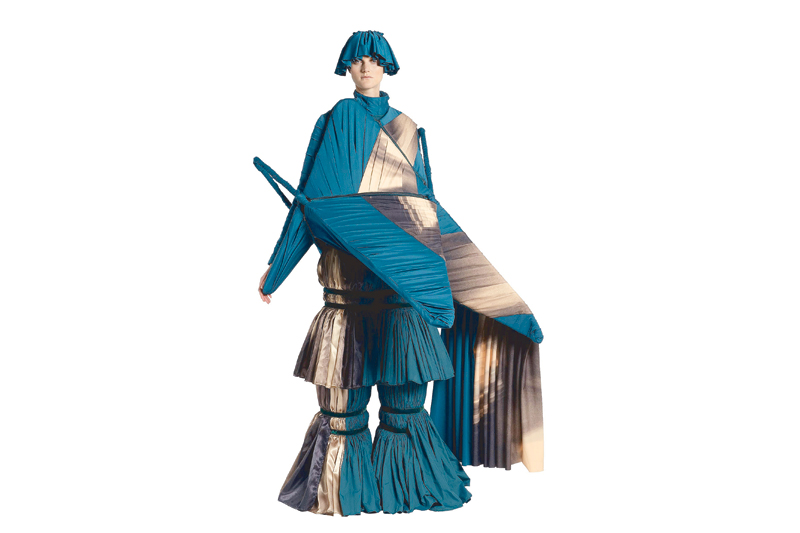
Let’s get to know Jessan.
YSTYLE: Chairs and clothing. What is the connection?
Jessan Macatangay: I wanted this final project to be very personal, so I started by exploring my own struggles and experiences. I am always fascinated by human beings’ resilience to face every hardship in life and adapt. Inspired by Melanie Bonajo’s photography, I used a chair to represent struggle in this project. Even though a chair is made for you to rest, when you put it in a different position on a body, you give it an opposite power, which becomes heavy and painful. Everyone has struggles. So, the best solution is finding beauty in struggle because at the end of every struggle is success and power. But how do you find beauty in struggle? Looking at Erwin Wurm’s one-minute sculpture, he deconstructed some chairs to fit right onto a person. So, the best solutions are to face and deal with that struggle and manipulate it by finding ways to fit through it.
I wanted to highlight the progression of frames that starts from a big sculpture on a body and then it becomes smaller on the next models. The last two looks have these buckle-like elements that are inspired from the back of a ladderback chair that I made smaller to signify that, when you face struggle, it becomes smaller and becomes part of your body, making you a better person. These small square wood "buckles" signify the tiny remaining fragments of struggle after dealing with it, draping the shape around your body. The squares are painted and it kind of camouflages your body, which shows that after successfully facing a struggle, the struggle is less visible in you, but it is deep within you and has become part of you.
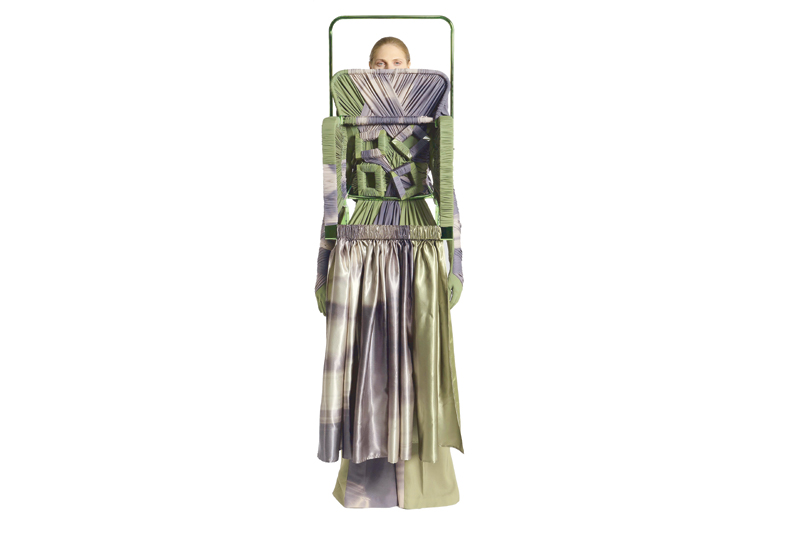
Why the intentional contrast between soft and flowy drapery with the hardness of chairs?
I used the hardness and modernity of sculptural shapes — primarily made from reclaimed wood and metal chairs with matte and chrome finishes — to represent struggle and the softness and flowiness of the draped fabrics for beauty. I wanted the contrast of pleated and draped jersey, cotton and a little silk to envelop the body of frames and structure to highlight that, at the end of every struggle, once you face it and deal with it, is beauty and power.
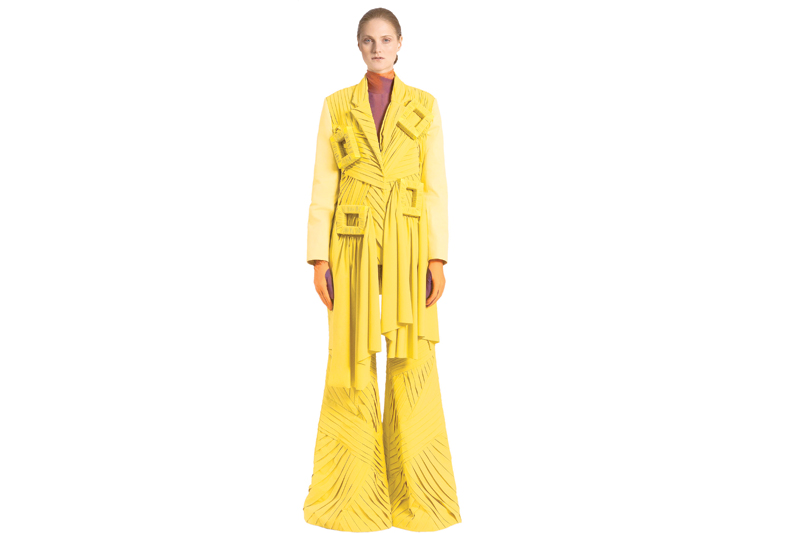
Tell us about the challenges you encountered, putting this together during the lockdown.
I knew I didn't want to just show two looks. This has been a culmination of five years of my studies and I wanted to present a full collection.
A week before the lockdown was implemented, we had our final toile lineup. We were about to start making the final pieces in real fabrics after that. But because of the lockdown, we had to move all of our work from university to our homes. I had to decide if I was going to stay in London or go back home in the Philippines. I realized that it would be more effective if I stayed in London as I have my sewing machine and basic tools here. I realized that time management was going to be very crucial to finish everything. Initially, I allowed one week to make each look, to allow time to do filming and the portfolio in time. Even though I consider myself pretty good at pattern cutting, it took longer than a week for each look. The first three complicated looks took me at least 10 days of non-stop sewing.
My challenges in production were mainly the resources and facilities to fabricate some of my pieces. Because of the lockdown, the fabric supplier I was working with abruptly closed. So, this forced me to find other options, which included dyeing most of my fabrics and digitally printing some. Aside from using fabrics, I had been depending on using the facilities at school to work on the wood and metal elements. Everything was supposed to be made from scratch using light materials. But because the university closed, I had no access to the wood and metal workshops to make my final pieces. I had to work on the scraps and available chairs and materials I had at home. I had put them together manually using simple tools I bought online, which I actually enjoyed doing. The process of actually achieving and making these changes made me realize that this situation completely reflected the concept of my graduation collection.
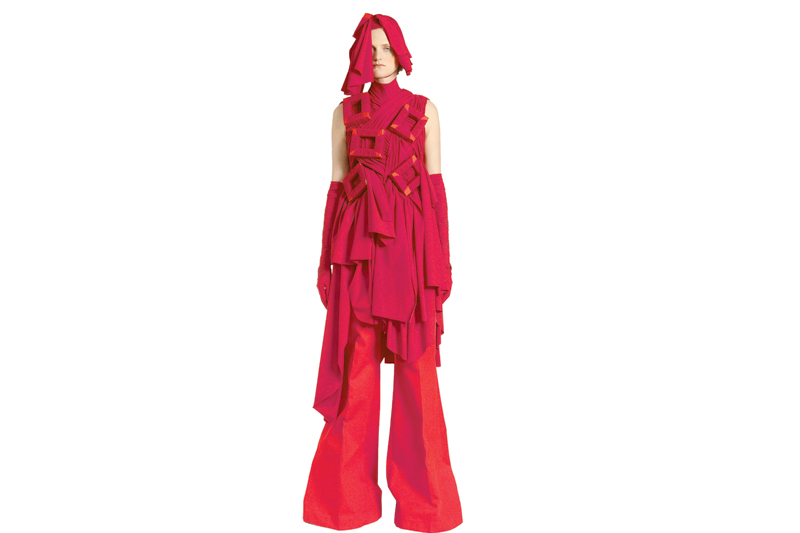
Why do we need fashion now?
In these unprecedented times, the mission of fashion and fashion designers should be an act of defiance to what is happening. We should assess the current situation of our industry and find solutions to improve it. I don’t think we can go back to what it was before. How will consumers behave in the future? How will retail and online sales be affected? What will be the impact on fashion production? I don’t think anyone has specific answers yet, but the lockdown has shown that there could be new ways. This situation should make us think about the status of our industry, especially with the amount of overproduction. Fashion is also a critical right as we use it to express our individuality, especially with what is going on in the world.
Is the Philippines in your future fashion design plans?
Definitely. My long-term plan is to launch my own brand. I want to make sure that I cater to our Filipino market as well. When I think of the possibility of my own people wearing my clothing, it is such an inspiring and fulfilling feeling. I think my work will always be influenced by my upbringing in the Philippines. So, it would be less about going back to my roots but rather being grounded in the Filipino identity.
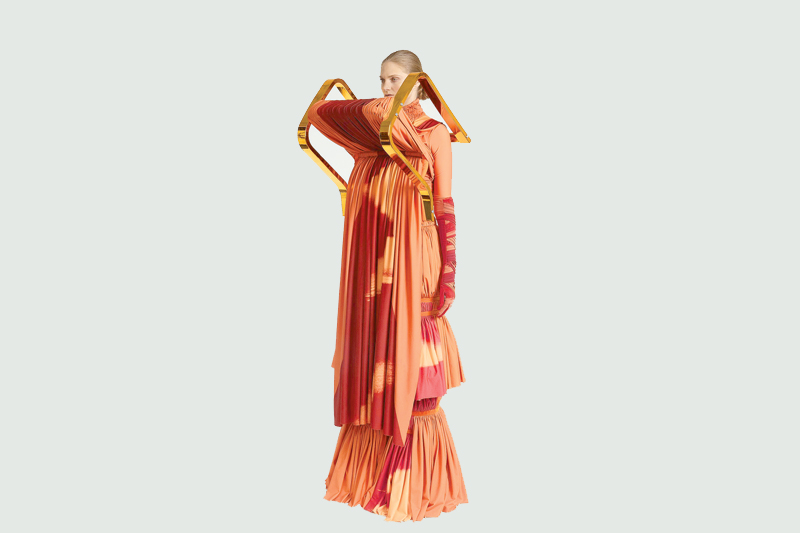
Now that you’ve completed your collection and shown it to the world with great response, what have you been up to?
Right now, I am taking a quick break to recharge my batteries. The last three months I spent putting together my collection while on lockdown was really intense. I am also trying to reconnect with family and friends who haven’t heard much from me for the last few months. In addition, I am also preparing to continue my studies since I just got an offer to study MA Fashion Womenswear at my university, Central Saint Martins. Classes will start this autumn. I wanted to learn more, so I want to use this time for that, especially at this uncertain moment in the employment market.



















